Last updated on February 4, 2021

I have to say, I was pretty excited when I found out that Ben Stark had created a Spikes Academy course.
Ben has the reputation of being one of the best – if not the best – limited players in the world. His Magic resume is impeccable, with an induction into the Hall of Fame in 2013. He’s gone from long history of stellar results at the highest level (a staggering five Pro Tour Top 8s and 23 Grand Prix Top 8s) and being a writer for Channel Fireball to now becoming a surprisingly popular streamer with a budding YouTube channel.
Limited always seems to play second fiddle to constructed in Wizards’ coverage priorities and attention, so I was pleasantly surprised to see Ben’s stream take off with a large audience. He is an extremely analytical player and is willing to explain everything in detail, and it turns out people really do want that. He’s quite good at breaking down complex concepts and board states into very clear action plans.
You can tell from his streams and videos that Ben loves to teach these concepts and that he loves to learn himself, so I had high hopes for his course.
I’d never taken a Spikes Academy course before, so I didn’t have too many expectations either way going in. I had watched the free videos on Paulo Vitor Damo da Rosa’s course, but that was about it. I asked Spikes for a review copy and they graciously provided me with one.
So, I dug in to answer the big questions: Is it worth it? Can a wannabe pro like me get anything out of an online course? Does e-learning even work for Magic?
And are the three free videos representative of the rest of the course?
The Price
Spikes recently announced a price drop on all their courses from $100 to $60. The $60 for this course is less than the cost of a one hour coaching session with Ben. Not too bad for close to two hours of material.
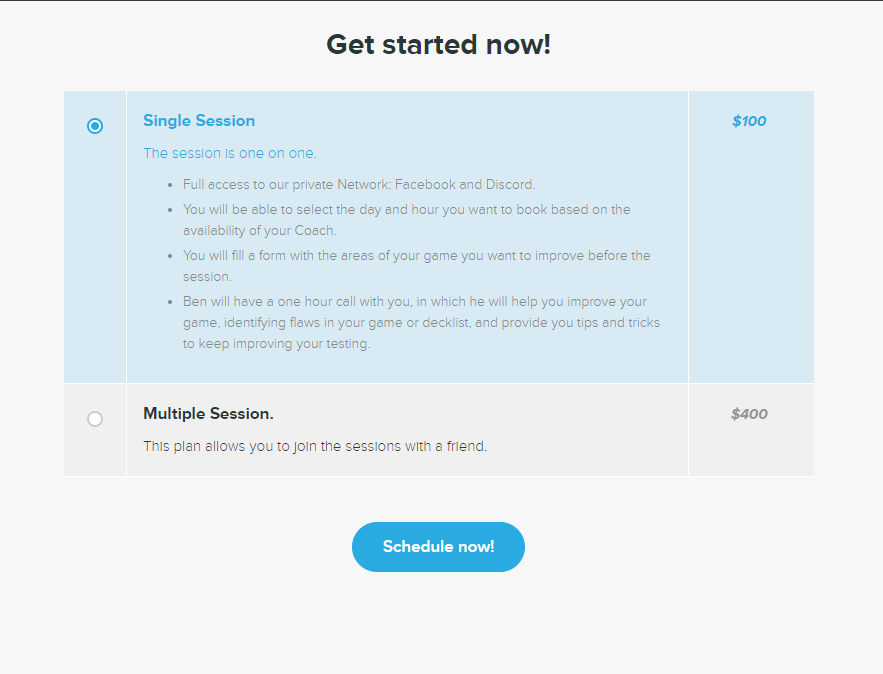
$100/hour to get coaching
Still, $60 ain't cheap – so what all do you get for that?
What You Get
The course has a total of 32 videos with 110 minutes of content. You should probably schedule around twice this amount of time to take breaks, pause the videos, and look up examples. The videos range from quick hit minute-long lessons up to a 16 minute complete walkthrough of a sealed deck build.
You also get access to a private Facebook group for meeting other Spikes and getting your competitive Magic questions answered. The discussion ranges from constructed metagame choices and sideboarding to limited deck building tips.
Who It’s For
This course is definitely geared toward experienced Magic players – there's tons of terminology and jargon throughout. If you’re a complete newb, this course is going to be way over your head. If that's the case, you might want to check out something like our Arena drafting intro instead.
Nor is this course for someone on the Pro Tour. I think most of the players at that level have probably 95% of the content in the curriculum down cold. And if you've been listening to Limited Resources and Lords of Limited for years, you probably don't need it either.
So who does that leave as the ideal audience?
I think the course is best suited for someone at the FNM level in paper Magic or perhaps someone on Arena who is comfortable drafting but wants to take it to the next level and make a push for Mythic. If you're a competitive standard player who wants to start getting into limited, this is probably the right course for you.
If Wizards ever resurrects limited in-store PTQs, then it would be absolutely required to understand this body of knowledge to succeed at that level.
But you have to be serious about improving your competitive play and utilizing and internalizing the course content. Otherwise, why are you spending $60 on a Magic course? If you don't really care that much, you can get quite a few drafts in on Arena for $60…
For experienced limited MTG grinders, there are tidbits here and there, but I wouldn't recommend the course for you either. It's mostly full of great mid-level foundational principles. As a hardcore limited-only player, I still managed to learn a couple new models and tips I hadn't internalized before, so at least I don't think I wasted my time watching the course for this review.
So, to sum it up: the course is going to be absolutely great for you if you're terrible at limited and need fundamentals and base level skills. But you have to be making a serious commitment to competitive limited play at the same time.
Logging In
All right, let's head over to Spikes Academy and jump into the course!
Spikes Academy has a few different classes available. It's easy to navigate and find what you want. Just click on Ben…

And we're inside. From the course dashboard, you can play any of the videos, jump around, and complete them at your own pace.
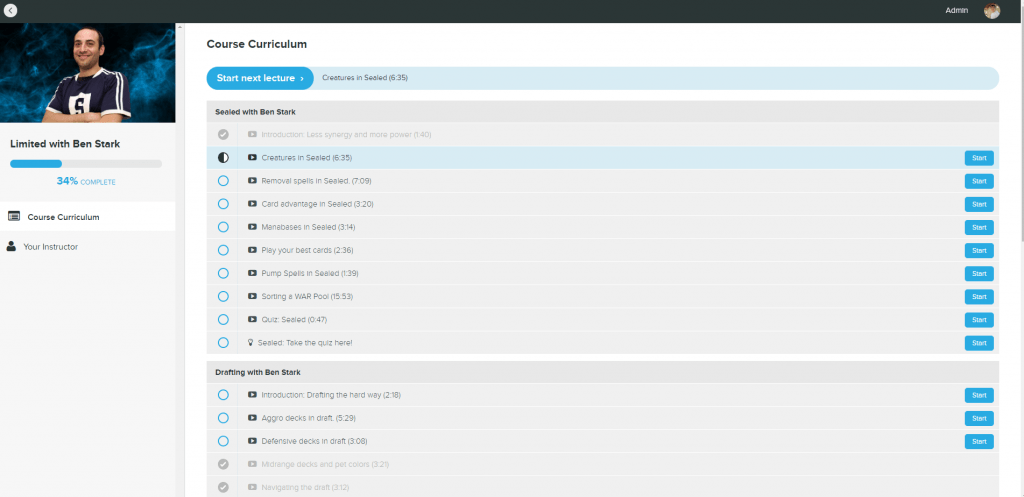
The course tracks your progress if you somehow forget which video you watched last.
Ben Stark and the Course Overall
So let's take a minute to talk about the teacher and the course as a whole. What overall impression do you get from watching it?
The videos certainly succeed in coming across as authentic Ben Stark. Whether Ben is talking about a format or evaluating lines of play, he's excellent at clearly breaking down the most salient points – lasering in on what matters the most.
Ben is one of my favorite limited teachers. I love watching his stream and CFB videos. But he spares no words or time in making his points, so you have to be amenable to this… loquaciousness to enjoy his teaching style.
The other aspects of Ben’s personality definitely come through in the course. Whether it's in the quiz questions or way he talks in the videos, he speaks with a confidence and incisiveness that is actually kind of inspiring. It makes you want to go play limited right away.
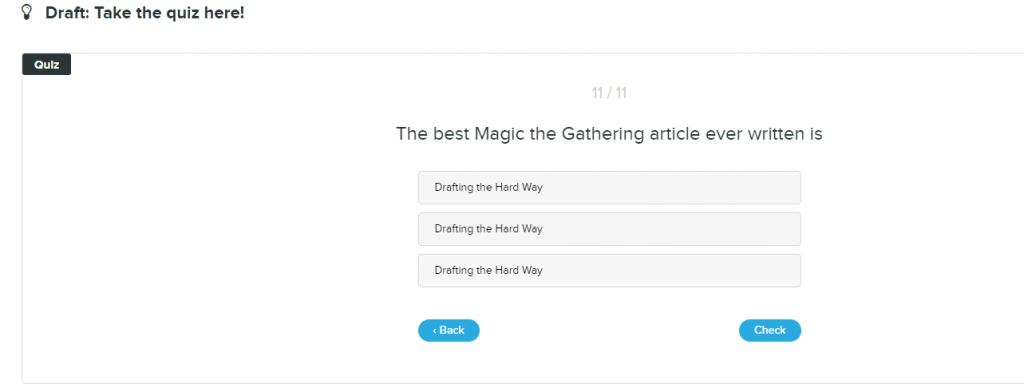
Ben's sense of humor also shines through
Like any of Ben Stark's content, the course is very information dense. You watch it and you nod your head to what you're hearing, but each sentence needs to be digested and considered. I would recommend pausing the videos periodically to think about what he says.
If you’re really trying to internalize all this stuff (if you're serious about getting your money’s worth out of it), then you should watch it 2-3 times if any of these concepts are new to you.
Organization
The course is split up into four main modules: Sealed, Draft, Team, and Extras. I definitely thought Sealed and Draft felt like the most cohesive portions, with the other two added to fill out the course or touch on topics that Ben felt absolutely needed to be addressed. Sealed and Draft feel more like a system that is being introduced to you, whereas the latter sections are presented as “quick hit” topics.
Quality of Examples
Fortunately, the content is relatively evergreen. I was concerned that it would be too related to particular sets. You can tell that the current sets when the course was being created were Guilds of Ravnica and Ravnica Allegiance, but any specific cards or archetypes that he refers to are fairly generalizable. So I think with a minimal amount of Googling (or looking at the example graphics), you would understand the discussion without having had to play these particular formats.
And of course, the context and lessons from these examples are transferrable to limited in general, not just a particular format.
Professionalism and Polish
The platform used (Teachable) is good and was relatively bug free. Videos take a few seconds to load but I had no technical issues. The content seems to be filmed in HD and the video quality (with the exception of the sealed deckbuilding portion) was good.
Unfortunately, on the content side, things look a bit rushed and unprofessional.
There are typos everywhere and the text in the course is littered with inconsistent capitalization and punctuation.
A couple examples:

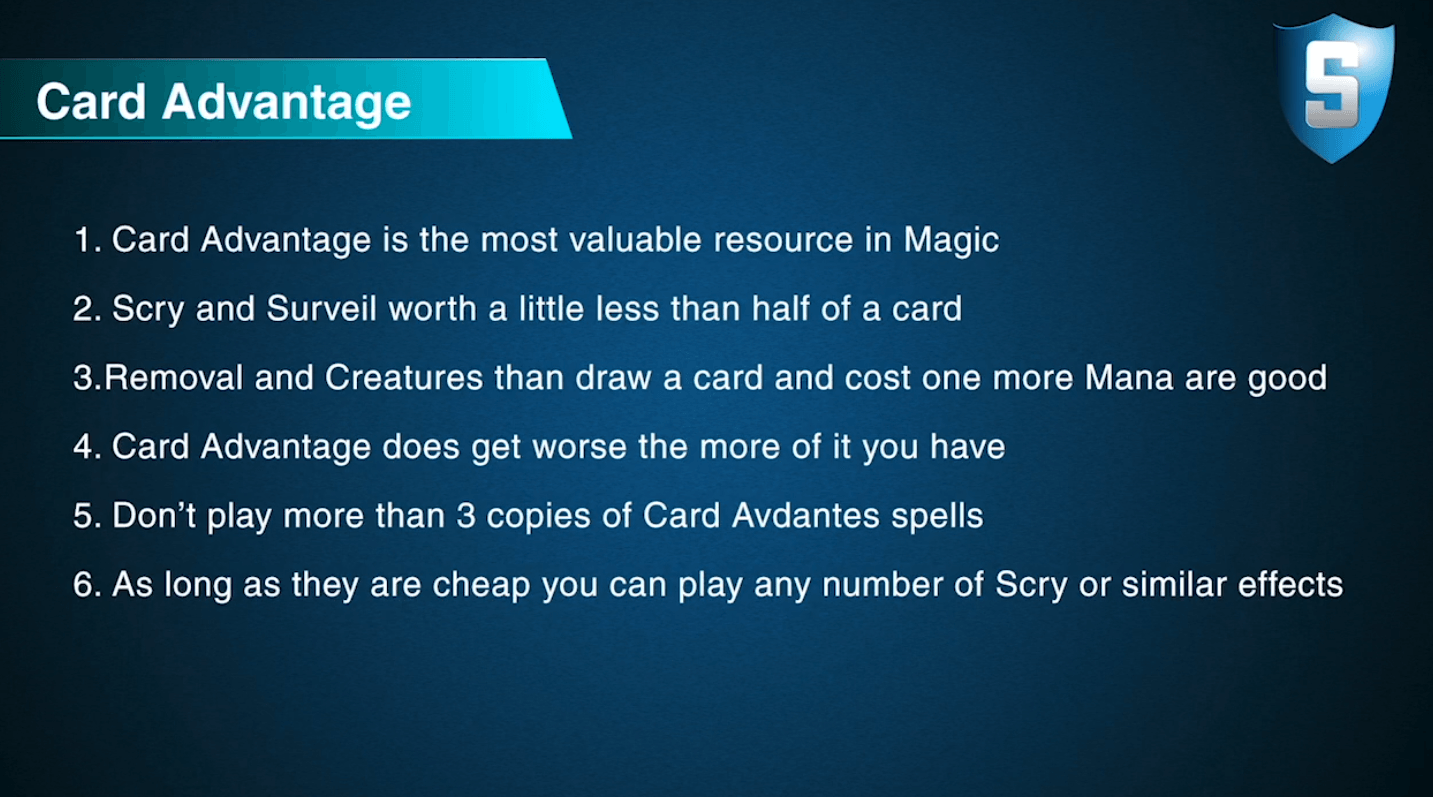
They really could have stood to hire a proofreader…
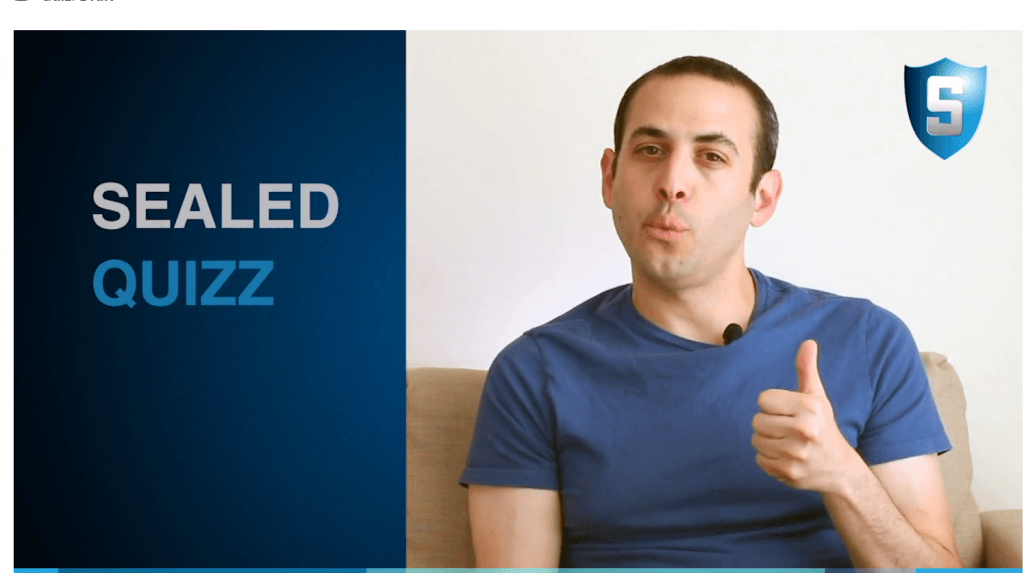
The quiz for the draft was labeled “Sealed”
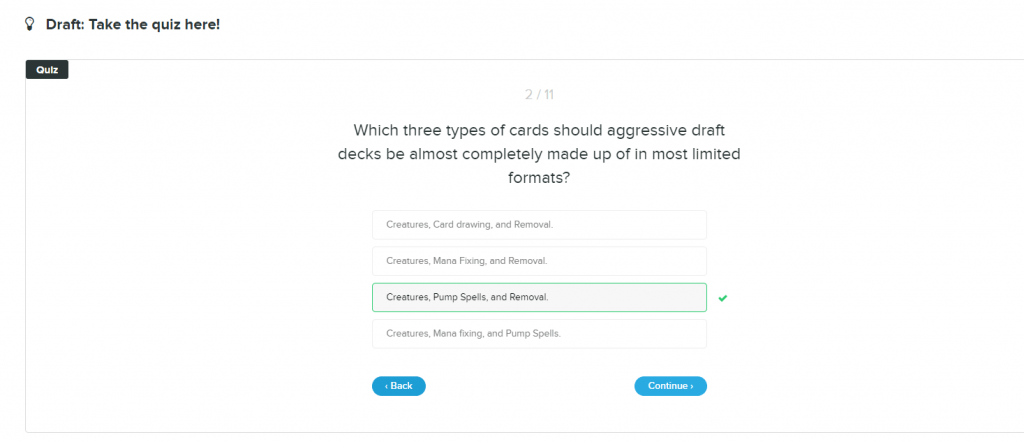
Question 2/11…
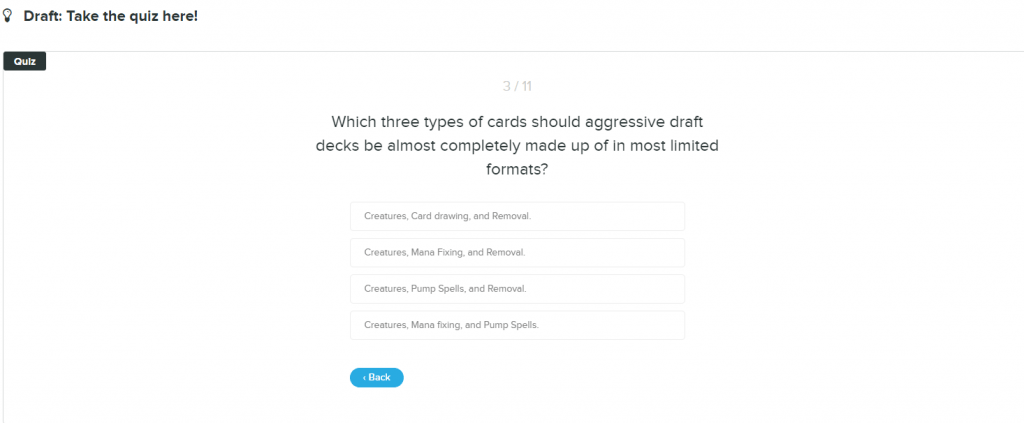
… is the exact same as question 3/11
Update (Oct 21, 2019): Spikes informs me that they have already made some corrections to these issues since I took the course myself. The label for the draft quiz and the duplicate quiz question have been corrected.
There were other inconsistencies too. For example, I liked having a recap at the end of courses – I think the spaced repetition is good for learning.
But the course did the recaps differently from lesson to lesson – sometimes the recap had a voiceover, sometimes not. The recaps with Ben doing a voiceover were way better, so I wish they had just done this for all the lessons.
It's hard to make a product feel premium when it has these types of noticeable gaps in detail and finishing touches.
Sealed
You just jump right into sealed from the beginning. I think the course could have used some context or an overview. But, whatever, here we go!
I liked this section the best. I think the organization and structure of this section made a lot of sense. Ben goes over the main card types (creatures, removal spells, card advantage, mana, pump spells) and tells you what quantity of each you should have in a typical sealed deck and how to evaluate them for power.
I thought it was pretty cool that he actually gave specific creature sizes and mana costs, along with curve quantities, that you want to aim for in a sealed deck. Of course, playing Magic an elite level requires knowing when to break rules and heuristics like these, but the guidelines Ben introduces are a wonderful starting point.
I found the section on mana bases pretty useful too. A lot of players struggle with this, and he presents very clear guidelines that are easy to visualize and understand.

A cool example graphic created for the Sealed module
There's a complete walkthrough of a building a sealed deck, which I found pretty good. It's actually amazing how quickly he identifies his colors and builds the deck. The only negative here is that there is some downtime while he sorts the cards that wasn't really necessary to include. And the camera is blurrier than in the rest of the course.
You definitely want the rules Ben lays out in this section to be echoing in your head when you sit down to register your pool for a sealed deck tournament. I could see watching this module just as a refresher before an event.
Drafting

The draft section introduces Ben's guiding theory of drafting — Drafting the Hard Way — before covering different meta archetypes of decks (aggro, control, and midrange) in draft. Then he covers in-draft decisions like if and when to force a deck, how to deal with close picks, how to choose your colors, and whether or not to go for that build around.
There isn't really much discussion about analyzing a format as a whole or the role of niche/build around decks in a format. I think there could have been more discussion about build around uncommons (other than Dovin's Acuity) and niche decks like Slither Blade or Stream of Thought and how they fit into your overall draft strategy.
I would have appreciated a draft walkthrough too. After all, we had one for sealed, so why not draft? I know finding an appropriate draft to talk about ahead of time is hard, but he could voice over a VOD of one of his drafts on stream or go over an old MTGO draft log. Definitely a missed opportunity.
Still, this module is good and worthwhile if you're not already a disciple of Drafting the Hard Way. If you find yourself not being able to identify the open colors or the open decks during a draft, or if you aren't comfortable playing every archetype and color combination, you'd get something out of these lessons.
Other Topics
The extra topics are divided into two main buckets – Team Limited and “Extras.” All the information provided within is good, and comes from well-reasoned experience, but it really doesn’t contribute much to any cohesive goal for the course.
Team Topics
Team sealed: I’m not sure there is any point in touching on it in a course like this. While it is very fun, and is an excellent competitive format, it’s also a very niche format that the vast majority of people don’t ever play. And if we’re only spending 2 hours together for videos, it’s probably not worth it to spend that time on something so narrow. As I often found, graphics and video of the decks and processes that he discusses would have been extremely helpful here.
Some portion of discussion about his pro team experience… well, let’s just say it wasn’t incredibly helpful. In fact, in one video, Ben spends a full 3 minutes talking about Josh Utter-Leyton.

Wrapter (Credit)
The discussion on Team CFB’s limited meetings before Pro Tours was great, and is very helpful to anyone who wants to get serious about playtesting limited with other people in a group. But it needed illustrative examples so badly.
When he starts to talk about the different categories and levels of cards that his team divides cards into, you really have to use your imagination to keep up. I only knew what he was talking about because I had watched the old CFB videos where they posted segments of the meeting.
You can see an example of one of these meetings here; it’s actually really fun:
The Extras
While I think that these were great topics to touch on and, as throughout, the information useful, the treatment of each was a bit superficial. Each of them has enough depth to be its own 6-8 video module.
For example, take the video on whether to play or draw. I’ve actually heard Ben filibuster for several minutes on podcasts or CFB videos about playing and drawing for longer than he does in that section in this course. I just wish it had been more fleshed out because I know the information is there in his head.
And then, after the extras, the course just kind of ends. No wrap up – no high level summary, no “this is what I want you to take away”, no benediction, no thank you. As a student, I wanted a little more like “if you like this, check out my next course,” or “for more information, go here,” or at the very least “I hope this helped, good luck in your next draft!” There should be a call to action or a next step.
The Quizzes
Yes, there were quizzes at the end of a couple sections. But for some reason, these were only after the Sealed and Draft sections. If we’re assuming that all the information presented in the course is equally valuable, and also just for the sake of consistency, there should have been quizzes after each section. In the end, they felt kind of sporadic and not really helpful.
Here’s an example:
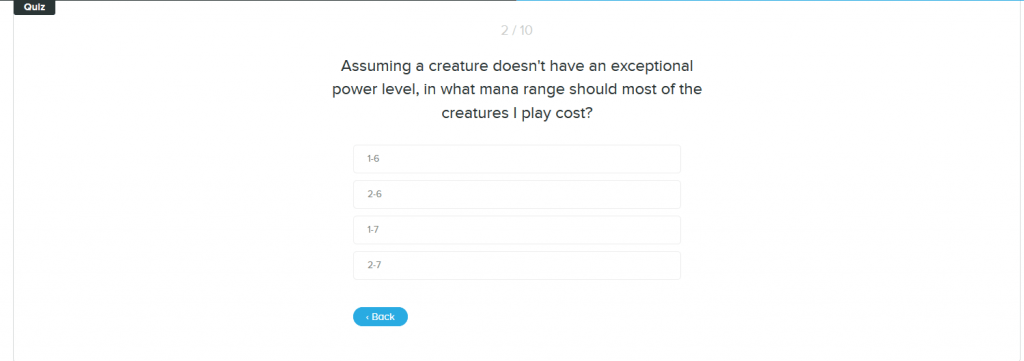
I think the quizzes were written by Ben and not Spikes Academy. On one hand, I think it’s great that Ben got to try and emphasize the points he wanted to about sealed and draft. However, he’s not a professional educator or curriculum developer and I think there was an opportunity to improve what the quizzes asked about and how. Plus, playing Magic in real life is not a simple multiple choice exercise, so I think a different question format would have been more helpful.
I understand these quizzes were added as an acknowledgement that you need to solidify and reinforce your learning, but I don’t think they were comprehensive enough to accomplish that job. They felt more like quizzes for the sake of a having a quiz because it’s a course, and courses are supposed to have quizzes.
Additional Resources That Would Have Been Helpful
Needs Moar Graphics

Graphics, graphics, graphics! That’s all I wanted to see. It’s so great to have valuable information being delivered to you auditorily by Ben, but nothing solidifies it in your mind like a great picture or example. The whole time I was thinking about how players who have not consumed thousands of hours of MTG content like I have would get lost or miss a lot of the references.
For example, there are often helpful examples of particular types of cards shown on the screen (along with a cool noise when they’re flashed in). So Ben will name a card draw spell like Divination and the card is pulled up on the screen so you know what he's talking about.
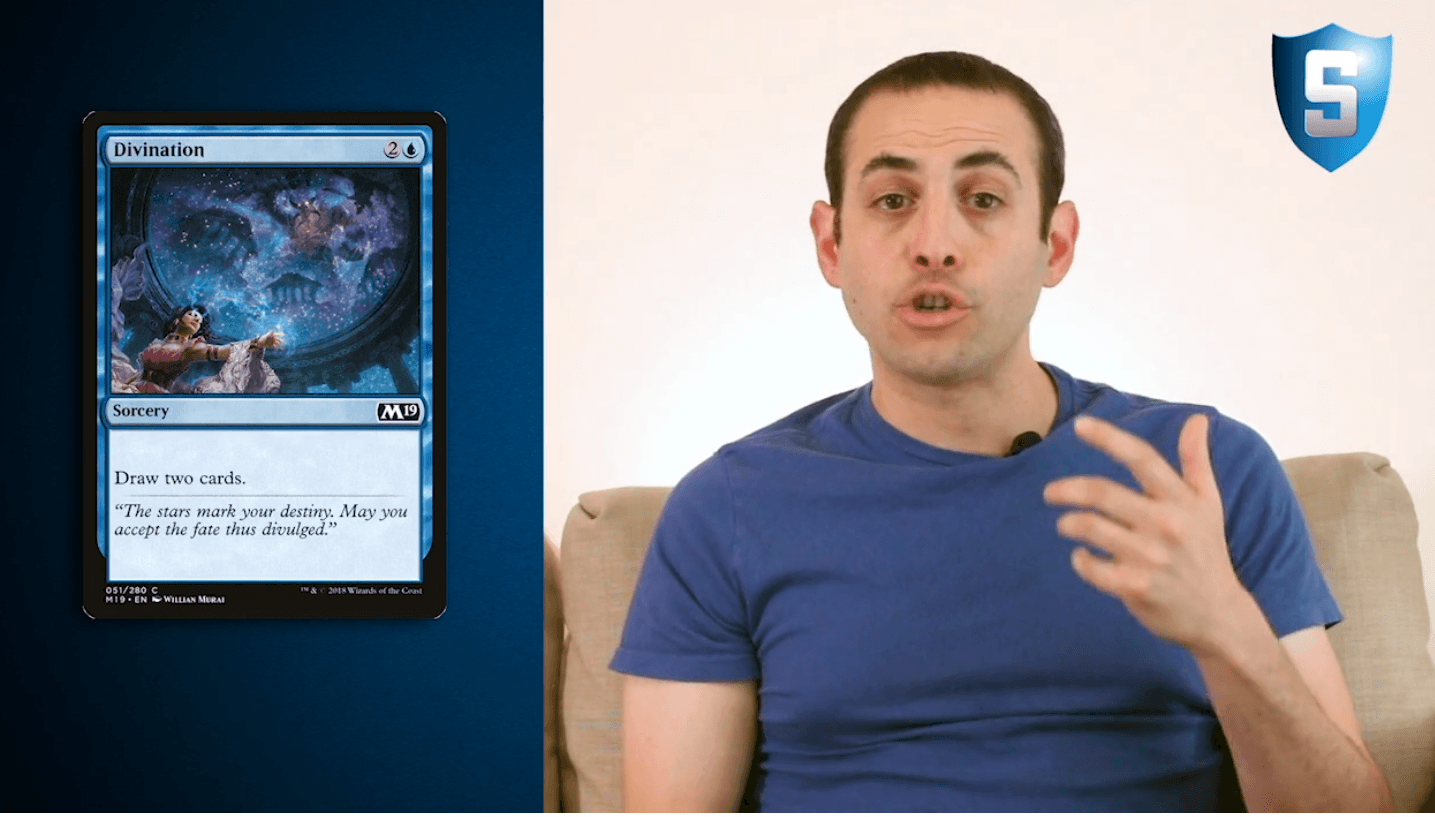
But even more illustrative card images could have, and should have, been included.
He also shows you a sealed build, which helps you learn the concepts he discusses much better:
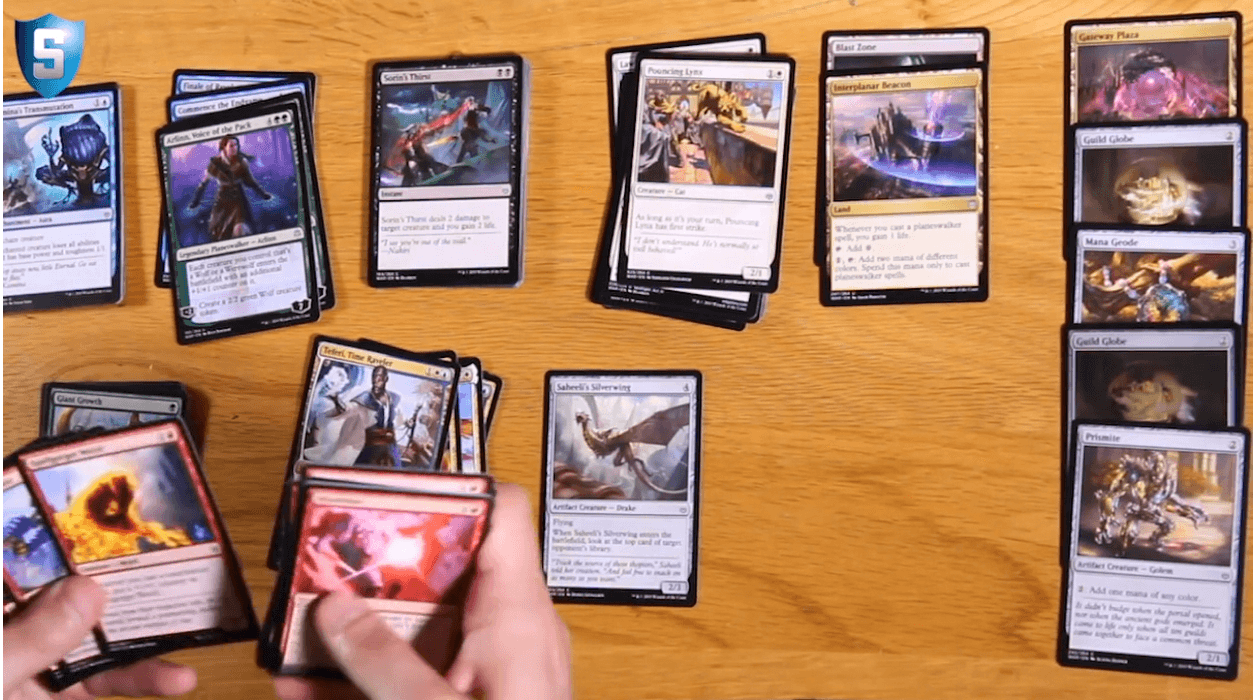
But there were so many other topics Ben discussed that needed visual examples. What about sample draft packs? It’s hard to discuss drafting without ever showing a single screenshot of a pack or a relevant pick. What about full sample draft decklists, for example when discussing Dovin's Acuity?
I think the archetype breakdown was really lacking in this department. It would have been invaluable to have example decks with actual cards that illustrated what a true aggro, midrange, and control deck were in limited.
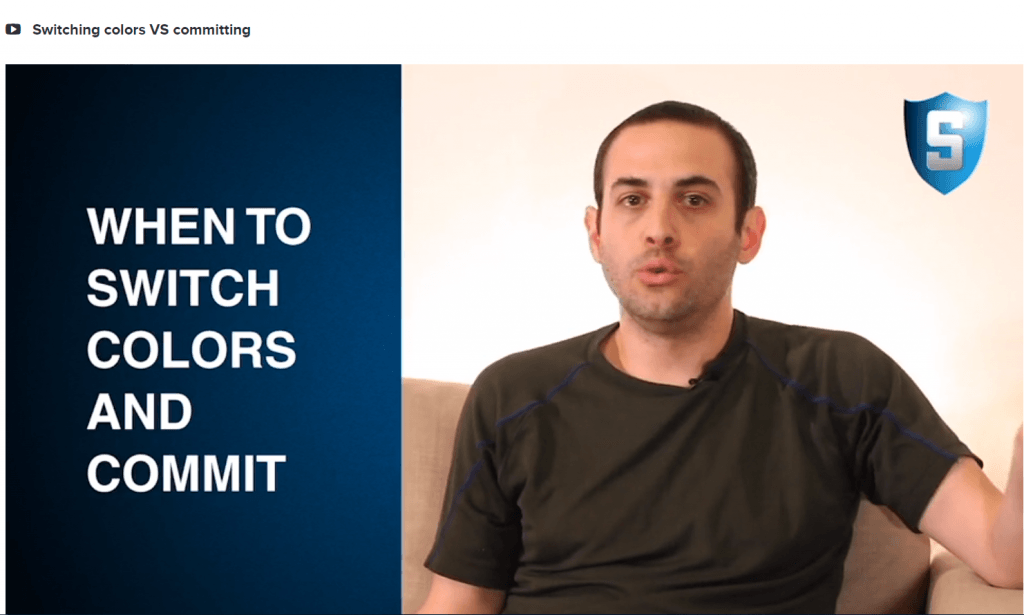
While there is a sealed walkthrough, there is no similar draft walkthrough. I think that would have been a great way to add 20-30 minutes more content to the course and to help show people how to directly apply the concepts that were just introduced.
If I had to guess, the reason these concrete examples are missing is because it’s hard to do. And expensive. As someone who makes online content, I know it takes a lot of time and money to make unique graphics. But if you are going to position your course as a premium offering, having extras like this really convinces customers that they’re getting their money’s worth.
Honestly, that type of supplemental material is what would turn this from a “highly-edited video interview” into a course. I really think that the lack of extras in concert with the lack of editing and polish in the graphics makes the course feel significantly less professional and “premium.”
Notes / Course Outline / Further Reading
Another surprising omission is the lack of any written components in the course at all. At the very least, I would have expected a high-level outline of the material covered in each video module. But I was also somewhat annoyed there were no “further resources” provided or linked out from the main page. I really think this would have made the course more effective for people with various learning styles or who wanted to learn more about a particular topic.
Every single one of the topics covered in this course has had many, many articles, podcasts, and videos created about it. It definitely would have been helpful for students to be able to read more in depth to supplement their learning. The most disappointing example of this phenomenon is when Ben talks about his seminal drafting article, Drafting the Hard Way, and there isn’t anywhere in the course you can get a link to it to read what he’s talking about.
Other Missing Topics
I’ve already touched on a few things I thought were lacking or missing in the course, but here are a few more that I would add:
- A discussion of card evaluation for draft – Ben gets off to a great start by talking about card evaluation for sealed deck. And he even addresses how draft is different than sealed (more synergy, faster games, etc), but doesn’t go much into its impact on card evaluation. Of course, card evaluation in draft could be its own entire course – going into build-arounds, niche decks, seemingly unplayable/undevervalued cards, how your evaluation changes as the format changes, etc etc. But I think this is too important of a topic to ignore in a limited overview by one of the greats.
- Sideboarding in sealed – this is such a huge topic and in my opinion, one that gives sealed an incredible depth of strategy to the format that many players don’t even see, let alone take advantage of. Whether it’s completely sideboarding into a different deck to counteract your opponent's game plan or switching out a color because your creatures/removal match up better against your opponent's, this is something that all advanced players should be doing, and I was chagrined it wasn’t even mentioned during the course.
- Limited gameplay – despite it being a massive topic, I expected at least some discussion of this. Learning drafting and deckbuilding is one thing, but gameplay in limited is extremely challenging (just watch me try to play sometime…) and is an area where many, many players will need help. Perhaps this is too much to cover in an “overview” course like this, but it was just a reminder that it is not comprehensive by any means.
The Facebook Group
A lot of premium courses, even outside the Magic world, have a community built around them so people can get more value out of the course. I was happy to find out that Spikes Academy did too.
The community is not really very heavily promoted, but I found a link to it inside the course and applied through their Facebook link (it’s a closed group).
The engagement inside the group… is decent. It looks like everyone gets their questions answered, often by a couple people. But don’t expect the pros and teachers from the courses to be in there “providing support” to every single student. It seems that Spikes Academy is relying more their community of students to help each other out.
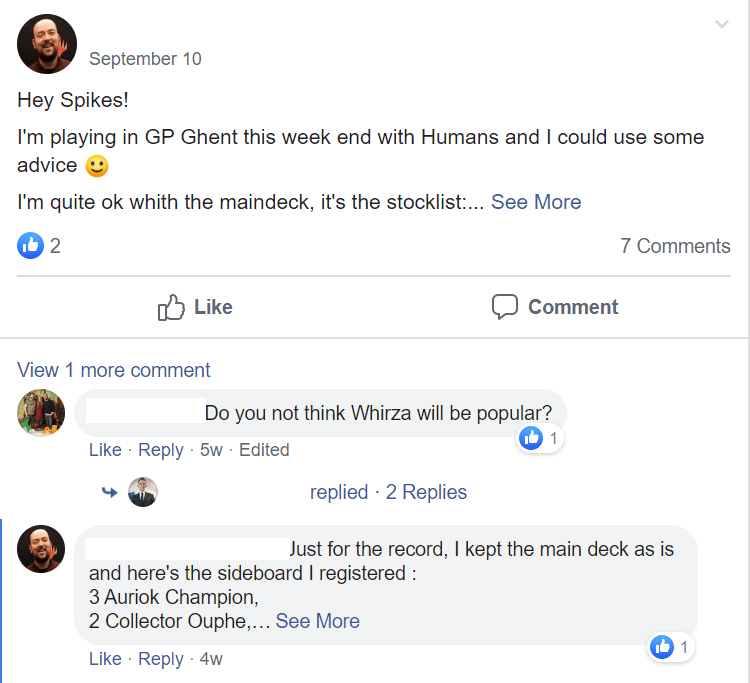
Also, for what it’s worth, there is not a ton of limited discussion going on there. More recently, I saw that one person has been asking a bunch of questions about draft/sealed, but that was about it.
Despite these criticisms, given the price of the course, if you get any kind of personal attention at all or community connection out of the FB group, it’s a great bonus. And then I think the value you're getting would clearly exceed the cost of the course.
Concluding Thoughts
This course exists to get you the basic principles and framework for thinking about draft and sealed. It's definitely not an “uber deep dive into everything you ever wanted to know about limited,” however, it covers principles you absolutely need to have down in order to succeed. Some of these lessons took me quite a few years of playing and voraciously consuming limited content to learn myself.
All the information that is covered is quite good, primarly because Ben Stark is delivering it. But overall, it doesn’t feel like an intentionally developed course/curriculum.
The Draft and Sealed modules were the best. Sealed was probably the most valuable, so if you really need help in that area, you should check out the course.
Can you get something you can't get from articles, streams, or YouTube? Not necessarily. But you might spend hours trying to piece together all this information. If you're a video learner, there's no other way that I know to get all this content consolidated in one series of videos.
Bottom line: The value is there, for the price — mostly because you get to spend 2 hours with Ben Stark — but just don't expect a premium or fully comprehensive experience.
Have you tried out the course yourself? What did you think?
If you're still on the fence about whether to try it out, you can check out a couple of the Ben Stark videos for free to see if you like his teaching style. Or you can get a better feel for Spikes Academy overall by previewing their entire library of free videos.
We also have an exclusive coupon for Spikes Academy! Click here to get the details.
Note: this post contains affiliate links. If you use these links to make a purchase, you’ll help Draftsim continue to provide awesome free articles and apps.
Follow Draftsim for awesome articles and set updates: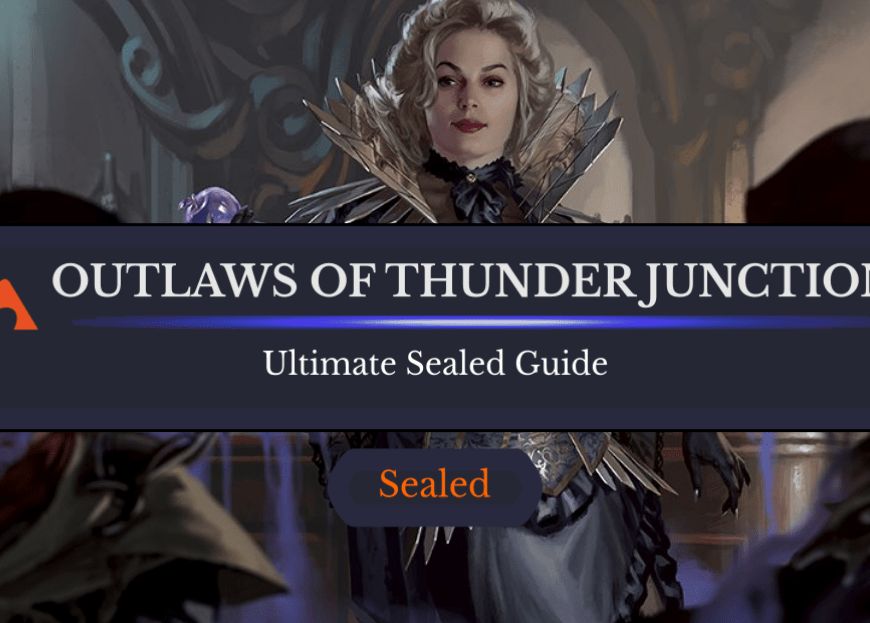

Add Comment